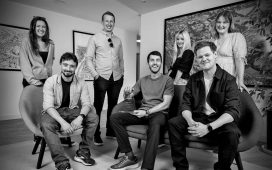Selling creativity in large multinational companies can often be a laborious challenge. There is always pressure from the C-suite to maximize return on investment. And that’s before we even get to the age-old subjectivity challenge—everyone in the business feels entitled to an opinion when it comes to a piece of creative work, whereas they’d rarely question their lawyer or accountant’s judgment. There is always the risk of a piece of work being rejected or watered down to the extent that the original idea is entirely lost.
We always look at how best to mitigate against subjectivity in matrix decision-making organizations, moving closer to objectivity. Australia’s Ehrenberg-Bass Institute for Marketing Science, as well as the work of Byron Sharp and Jenni Romaniuk, have led the charge to help remove some of this subjectivity by focusing on the power of distinctive brand assets that businesses need to leverage for brand recognition.
But there’s another powerful tool we can add into the mix to further sharpen brand communication—neurodesign, the application of neuroaesthetics. While there are some elements of neuroscience used within advertising already, this emerging field can add a potent layer in the realm of creativity, amplifying those brand assets and their effectiveness by reaching consumers on a more powerful nonconscious level.
Neuroaesthetics is a subfield of cognitive neuroscience and is traditionally defined as the scientific study of the biological mechanisms involved in our experiences with beauty. By understanding and using neural pathways, neurotransmitters, cognitive processes, memory, perception and emotions, neurodesign can create experiences that resonate instinctively at a nonconscious level with audiences and deliver tangible value.
It removes subjectivity from the equation by grounding decisions in human behavioral science, enabling us to push beyond personal preferences and gut instincts to create work that is not only visually appealing but also strategically sound. This allows us to develop a vocabulary that helps us eloquently articulate the power of our work and compellingly argue for solutions that are not just beautiful on the surface but also effective in achieving brand and commercial objectives.
Leveraging the subconscious
Neurodesign needs to reflect five basic human truths: that the brain craves ease and order, that humans have a limited attention span, are visually driven, respond to emotion and are attracted to beauty. There are 16 neuroaesthetic “triggers,” including Cusps & Curves, Orientation, Color, Agitation & Calm, and Anticipation & Tease.










